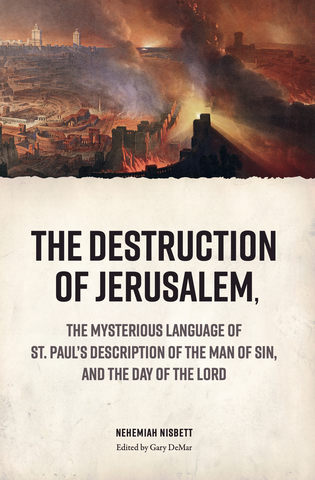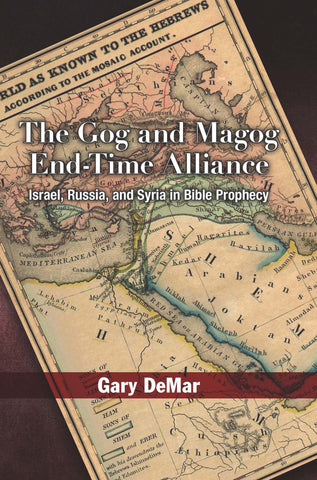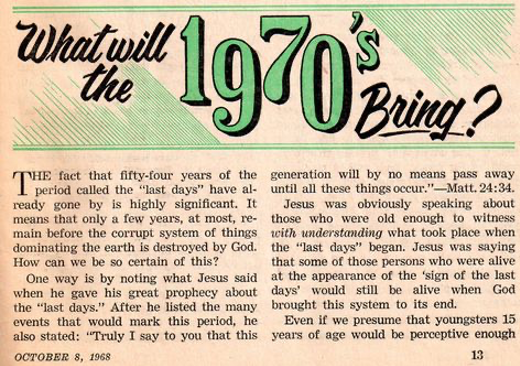My friend Bob Cruickshank sent the following to me regarding testimonies on Facebook’s Preterfest group: “So many were caught up in the JW [Jehovah’s Witnesses] movement—thinking the world was going to end and knocking on doors to tell people.” It’s encouraging to see so many people abandoning end times fiction. The sad fact is that many Evangelicals have been told a prophetic system that is like what Jehovah’s Witnesses advocate.
We almost never get visitors to our house unless we invite them. When someone pulls into our driveway, it’s to use it as a turnaround. One Saturday years ago, a shiny new SUV rolled up the driveway and a smartly dressed couple got out and came to the door. As I suspected, they were Jehovah’s Witnesses. There’s a Kingdom Hall not far from our house. I was surprised to see them. Word usually gets around not to go to that house. This couple must have been new to the neighborhood. I was my usual affable self as I greeted them.
I noticed that they were carrying the latest copies of The Watchtower magazine and Awake! Both dealt with the last days. In fact, the cover of Awake! asked this question: “Are We Living in the Last Days?” This question is continually asked by millions of Evangelicals.
The following image looks like what JW’s would create. They use the same prophetic texts and faulty conclusions:

First Thessalonians 5 contrasts what was about to happen to that first century generation. Note the audience contrasts: “they” and “you.” Also notice the parallel between 5:3 and Matthew 24:8 (birth pangs), an obvious reference to that Apostolic generation (Matt. 24:34). Also, “While they are saying, ‘Peace and safety!’ … But you, brethren, are not in darkness, that the day should overtake you like a thief; for you are all sons of light and sons of day” (5:3-5). Who are the “you”? The Thessalonians who were warned about Jesus’ promised coming judgment that would change the covenant structure of the Bible. The “they” were the “scoffers” who were asking, “Where is the promise of His coming?” (2 Pet. 3:4) For a comprehensive study of 1 Thessalonians 5, see Nehemiah Nisbett’s The Destruction of Jerusalem, the Mysterious Language of St. Paul’s Description of the Man of Sin, and the Day of the Lord.

The Destruction of Jerusalem...
Many of the arguments happening today over eschatology were discussed by people like Nisbett centuries ago. If more commentators had paid attention to his works, we would not still be arguing as we do. Most of Nisbett’s works dealt with eschatology. Nisbett would be described as a preterist on passages that many partial preterists would say are yet to be fulfilled. This is especially true of his interpretation of 1 Thessalonians 5.
Buy NowThe JWs follow an end-time scenario that is not much different from the one outlined in the Left Behind series and in so many books dealing with Bible prophecy. Appeals are made to 2 Timothy 3, sections of Daniel, and, of course, the Olivet Discourse in Matthew 24 (see my books Wars and Rumors of Wars, Last Days Madness, and Is Jesus Coming Soon?) Just like the dispensationalists, the JWs point to 2 Peter 3:3-4 to support their claim that those who do not believe we are living in the last days are “scoffers.” As evidence that we are living in the last days, they, like dispensationalists and Facebook prophecy “experts,” point to “a tribulation that would be greater than any that had yet occurred” (Awake!, April 2008, 4). Then there are the obligatory references to nation rising against nation, and kingdom against kingdom, earthquakes, pestilence, and the worldwide preaching of their version of the gospel into all the world in our day (Matt. 24:14).
You will also find that JWs and Evangelical prophecy pundits share the belief that world wars, terrorism, tsunamis, and diseases like malaria, influenza, and AIDs are empirical evidence that the end must be near. There is also the common belief that Armageddon is still in our future. Like the dispensationalists, JWs “are convinced of the reality of these prophecies” (Awake!, 7).
JWs travel in pairs. This is a good strategy (see Matt. 10:1). Usually, one is a trainer, and the other is a trainee. I directed my comments to the trainee. The trainer was trying to leave, but the trainee wanted to ask some questions. I used the opportunity to point out some things that she will never hear from the local Kingdom Hall. I went through the usual points that Matthew 24 is describing events in Jesus’ day, and what would happen to that generation (24:34). Since so much emphasis is on worldwide evangelism, I also explained that the gospel proclamation in 24:14 described the gospel going out to the then known world. The Greek word often translated as “world” is oikoumenē and described the political boundaries of the Roman Empire (Luke 2:1; Acts 11:28) Rom. 1:8; Col. 1:6, 23; 1 Tim. 3:16).
I made a few other points. My goal was to get the trainee to question what she had been taught. I’m sure some debriefing went on when they returned to their SUV.
Everything I heard, except for a few odd translations of passages that come from their idiosyncratic New World Translation, are the same types of arguments I hear from Evangelical advocates. Of course, there are some notable differences, but the overall apologetic is nearly identical. I’ve even experienced dispensational writers who try to keep contrary arguments from their trainees. (Some Reformed folks do the same when the topic of preterism comes up). They’re afraid their devoted followers will begin to question dispensational dogmatism if they hear people like me question dispensational assumptions. Trying to get dispensationalist authors to come on as a guest on my podcast to defend their latest books is almost impossible. Here’s what I received from a very prominent dispensationalist author:
Gary,
What you call an interview is actually a debate. You want to debate the issue. I can appreciate that you’re very busy too, but I’m only responsible for controlling my own schedule, and I have to decide what’s the best use of my own time and energy. I don’t believe it’s a good use of my time and energy at this time because I believe that debating you and other preterists on these kinds of issues lends added credibility to your view. Having someone to debate makes your view of Ezek 38 appear like another equally acceptable alternative, which I don’t believe it is. I try to be careful in what I choose to do with this in mind. I’m sure you disagree with me, but that’s my answer to your invitation.
I answered by pointing out that if my view is so easy to refute, he should have no trouble mopping the floor with me. The fact that one of his own co-authors agrees with me on a significant point regarding Ezekiel 38-39 (that the future battle depicted in Ezek. 38-39 would have to be fought with ancient weapons because of “literalism”) is direct evidence that the prevailing end-time scenario outlined by dispensationalists is falling apart.

The Gog and Magog End-Time Alliance
Jet planes … missiles … and atomic weapons. You will search in vain in Ezekiel 38 and 39, and you will not find them. You will, however, find horses, bows and arrows, shields, clubs, and chariots. If the Gog and Magog prophecy was written for a time more than 2500 years in the future from Ezekiel’s day, why didn’t God describe the battle in terms that we could relate to and understand? Why confuse Ezekiel’s first readers and us?
Buy NowI understand anyone’s reluctance to debate. I don’t like doing debates because of the time involved in preparation and limitation factors regarding debates. But claiming that debating me “and other preterists on these kinds of issues lends added credibility” to preterist arguments cuts both ways. Such a debate would also give my audience the opportunity to hear his arguments, and maybe his arguments would convince them that I am wrong.
Prophecy cultism has entered the Evangelical world. End-time prophetic cults seem to be an American invention because most Christians do not pay attention to audience relevance and time indictors.

